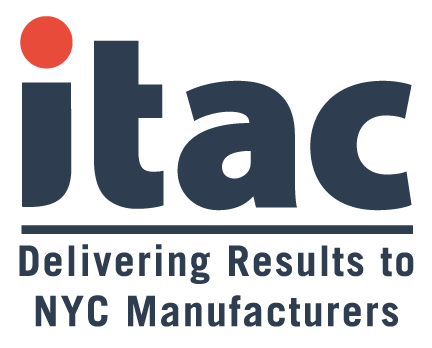With jurisdiction over approximately seven million workplaces, the Occupational Safety and Health Administration (OSHA) could conduct an unexpected visit at your facility at any time. It pays to be prepared, not only to avoid citations and fines but to keep your workers as safe as possible.
We’ve compiled a list of OSHA’s top 9 violations and the steps you can take to ensure your facility passes its next inspection.
1. Inadequate Fall Protection
One of the most common risks cited in OSHA’s summary is the danger of inadequate fall protection. According to the Bureau of Labor Statistics (BLS), there were 366 fatal falls to a lower level out of 971 construction fatalities in 2017. Employees can fall from elevated platforms or work stations, uncovered holes in the floor, or even a spill.
To prevent a fall in your facility, OHSA recommends:
- Using guard rails and toe boards: These should be employed around holes in the floor, on elevated open-sided platforms, or around dangerous equipment or machinery.
- Employing personal protective equipment: This can include safety harnesses to prevent falls where necessary.
- Maintaining a clean facility: Keeping the floor and other facility spaces clean and dry can prevent or at least limit slips and falls.
2. Poor Hazard Communication
According to OSHA guidelines, workers have the right to “receive information and training (in a language and vocabulary the worker understands) about workplace hazards, methods to prevent them, and the OSHA standards that apply to their workplace.” Information about the identities and hazards of the chemicals present in your workplace must be made available and understandable to workers.
To comply with OSHA’s requirements, be sure to inform your employees of:
- Hazard classifications: Each hazard should be easily identifiable and classifiable, meaning workers should be able to identify the chemical and result of chemical mixtures and their associated health and physical hazards.
- Labels: Chemical manufacturers, importers, and handlers need to provide a precautionary label that includes a harmonized signal word, pictogram, and hazard statement for each hazard class and category. It is also important to note the native language of your employees so that they will be able to understand the communication measures being taken.
- Safety data sheets: Employers should be providing safety data sheets that follow the 16-section format listed on OSHA’s website.
- Information and training: Employers are required to update and continuously train workers on any changing or added labels being provided in their workplace. They should be familiar with safe chemical handling processes.
3. Dangerous Scaffolding
If you have any scaffolding present in your workplace, you can be sure an OSHA inspector will examine it; unsafe scaffolds are the third most frequently cited violation. Every year, 4,500 injuries and over 60 deaths result just from scaffolding injuries, losing American employers about $90 million in lost workdays. In a recent BLS study, 72% of workers injured in scaffold accidents said it was from either planking or support giving out, or the employee slipping or being struck by a falling object.
All of these accidents can be prevented or better controlled by compliance with OSHA standards, including remembering to:
- Routinely check all scaffolding: Scaffolds used during construction or in day-to-day operations must comply with OHSA’s standards to prevent falls, including using construction-grade lumber capable of supporting up to 1,500 lbs.
4. Unsafe Ladders
As with scaffolding, ladders used during construction or in day-to-day operations must comply with OHSA’s standards to prevent falls. Employees must also be properly educated on procedures for the safe use of ladders, like not holding heavy items and only using a ladder for shorter periods of time. Without using these regulations, workers are put at major risk of injury. According to BLS, ladder-related incidents led to more than 150 worker fatalities and more than 20,000 nonfatal injuries in 2015.
To avoid these risks:
- Routinely check all ladders: Ladders used regularly must also comply with OSHA’s standards to ensure safety.
5. Insufficient Respiratory Protection
Harmful gases, dust, fog, smokes, mists, vapors, or sprays can put your workers at risk of lung impairment, lung cancer, and death – yet these risks are easily avoidable with the proper use of respiratory equipment. While it isn’t always comfortable to wear, it is absolutely vital for worker safety. Not only should employers ensure respiratory protection is provided, but they should also ensure:
- Correct fit: Respiratory equipment should fit the face securely to ensure effective usage.
- Applicability: The equipment should be properly suited for the task and hazard.
6. Insufficient Eye and Face Protection
Eye and face injuries account for an estimated $300 million annually in medical bills, compensation, and time off; these injuries also make up nearly 45% of all head injuries that lead to missed workdays. Workers can be blinded by chemical, environmental, radiological, or mechanical irritants and hazards.
As with respiratory protection, eye and face protection should be appropriate for the task and hazard at hand and may range from basic safety goggles to a welding helmet. Regulations can encompass details like the size of protection to the tint of eyewear, so be sure to review all requirements to confirm adherence within your facility.
- Provide proper protection: Make sure all employees have consistent access to face and eye protection while on the job.
- Eye or face injury training: Regularly remind employees not just about proper eye and face safety but also about how to handle situations if injuries do arise, such as the proper use of eyewash stations.
7. Poor Control of Hazardous Energy
The unexpected release of stored energy (electrical, mechanical, hydraulic, pneumatic, chemical, thermal or other sources) in machines and equipment can result in injury or death. Employees who service or maintain machinery and other equipment are at the greatest risk from the unexpected release of hazardous energy, such as a steam valve being turned on while a worker is repairing a connection in the piping. Injuries may include electrocution, burns, crushing, laceration, or more serious injuries.
Compliance with lockout/tagout standards prevents an estimated 120 fatalities and 50,000 injuries each year.
- Follow Lockout/Tagout Practices: Be sure to follow all lockout/tagout guidelines to prevent accidental stored energy releases while employees are engaging or otherwise working with the machinery.
8. Unsafe Forklifts or Powered Industrial Trucks
More commonly known as forklifts, powered industrial trucks present many hazards including falling load accidents, pedestrian safety, and trucks being driven off loading docks. In addition to adhering to OSHA’s requirements, also make sure to enforce:
- Age restrictions: No one under 18 years of age operates a forklift.
- Training requirements: Operators over 18 years of age are trained, certified, and fully aware of all forklift-related hazards.
9. Inadequate Machine Guarding
Any machine with moving parts is potentially hazardous to workers and can cause crushed fingers, amputations, burns, blindness, and other injuries. The type of safeguarding depends very much on the machine but may include railing to safeguard by safe distance, warning signs, enclosures, screening, grating, and other methods. OSHA notes that when accidental contact and accidents occur, the hazard must be eliminated or controlled to prevent further injury.
- Routinely check machine guards: Guard machines should be properly installed and maintained. Check around your facility regularly to ensure the guards are in place and being used correctly by various team members.
The insight is from ThomasNet.com. You can read the full article by clicking here.






